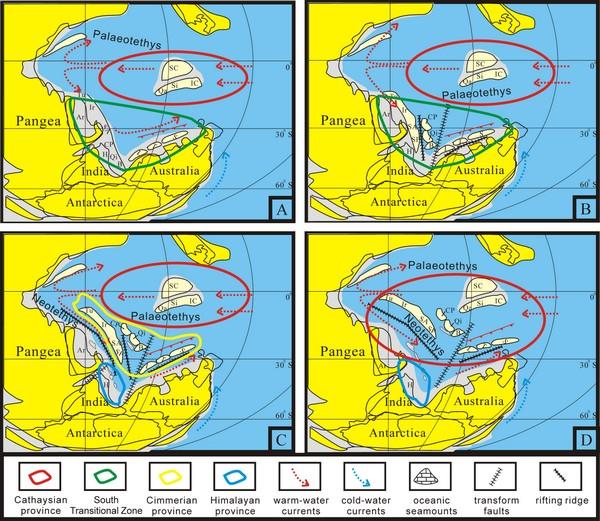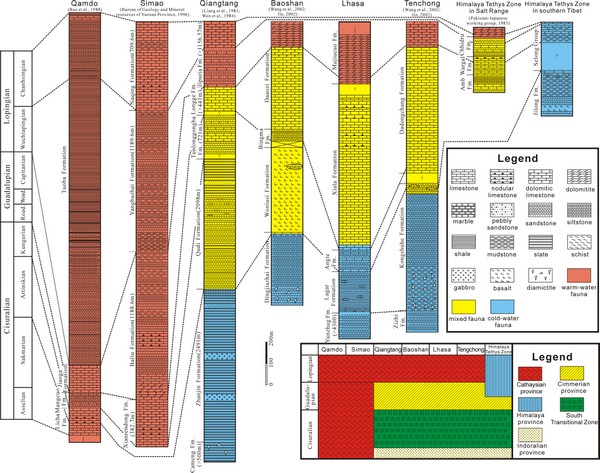The Qinghai-Tibet Plateau represents the youngest plateau with complex tectonic evolution. In recent years, many models have been proposed based on those new advances on lithology, tectonics as well as geochemistry data. However, many models do not take into account the Upper Palaeozoic strata and palaeobiogeography.
Dr. ZHANG Yichun from Nanjing Institute of Geology and Palaeontology, Chinese Academy of Sciences and his colleagues recently made a review on the Permian stratigraphy, biostratigraphy and palaeobiogeography based on the previous studies and the authors’ fieldwork in Tibet for many years.
This review reveals the following important aspects: ① The Qamdo Block, in palaeobiogeography, belongs to the Cathaysian Province during the whole Permian period whereas the Lhasa Block and the Qiangtang Block are ascribed to the South Transitional Zone during the Cisuralian, the Cimmerian Province during the Guadalupian and the Cathaysian Province during the Lopingian. This transition is considered to be triggered by both the northward drift of the Cimmerian continents and the background climatic amelioration after the Late Palaeozoic Ice Age. ② In palaeogeography, the Longmu Co-Shuanghu-Lancangjiang suture zone represents the main Palaeotethys suture with the Qamdo Block in the north lacking Late Carboniferous to Early Permian glacimarine deposits. ③ Three continental slices are recognized based on the depositional sequence and the faunal characteristics. They are the Lhasa-Tengchong-Sibumasu slice, the Qiangtang-Baoshan-Central Pamir slice and the South Pamir-Karakorum-South Afghanistan-Central Iran-Turkey slice respectively. The Lhasa-Tengchong-Sibumasu slice, lacking the Cisuralian rift-related magma, is considered to have close relationship with the Western Australia. The Qiangtang-Baoshan-Central Pamir slice and the South Pamir-Karakorum-South Afghanistan-Central Iran-Turkey slice are both considered to be separated actively from Gondwana diachronously.
This paper will be published in Gondwana Research as the Focus Review style (Yi-chun Zhang, G.R.Shi, Shu-zhong Shen, 2012. A review of Permian stratigraphy, palaeobiogeography and palaeogeography of the Qinghai-Tibet Plateau. Gondwana Research, in press, doi: 10.1016/j.gr.2012.06.01)

Schematic Permian palaeogeographic reconstruction maps of northern Perigondwana and Palaeotethys with a focus on Tibetan blocks

Correlations of Permian sequences among the different blocks of the Qinghai-Tibet Plateau and adjacent blocks/areas
Download:
